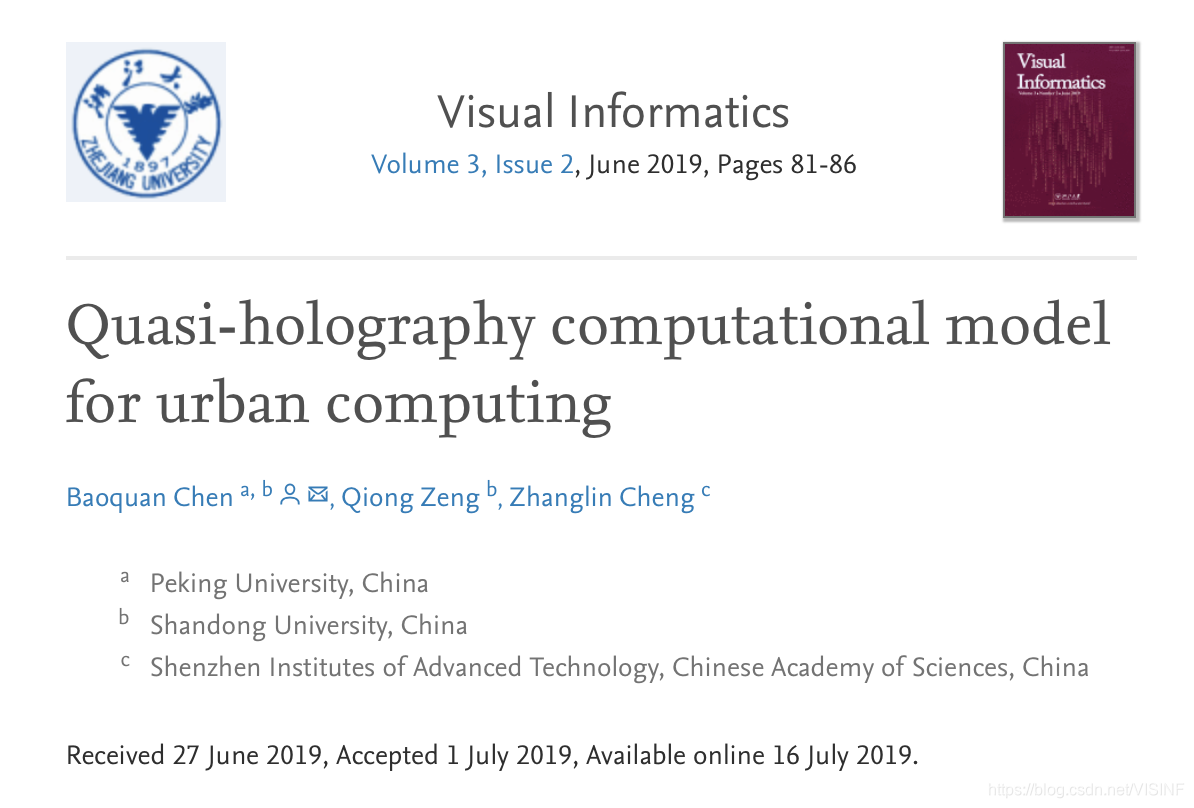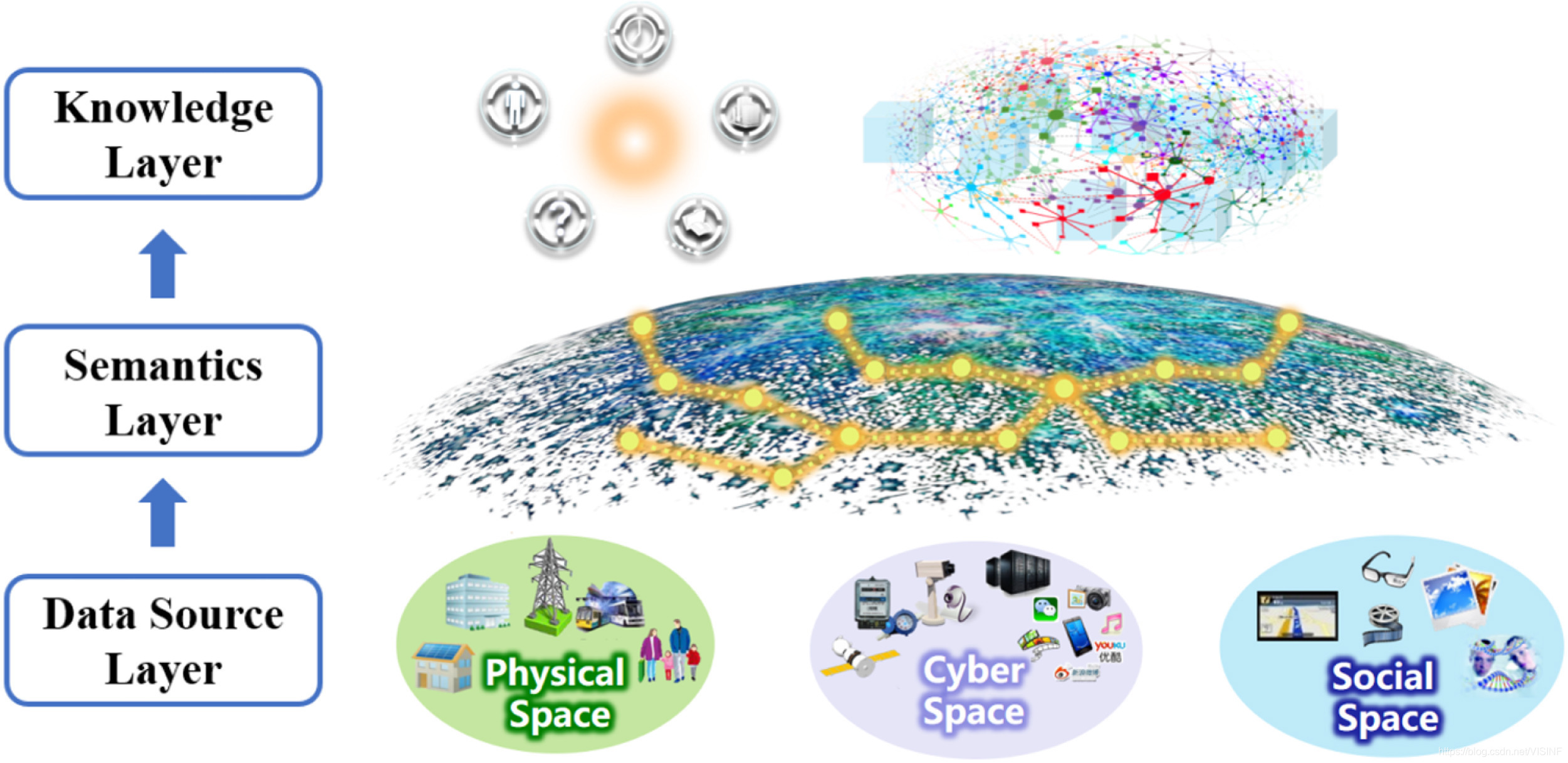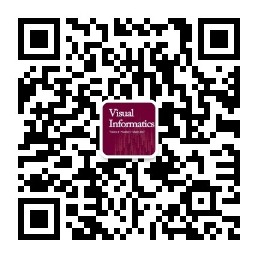随着智慧城市和城市计算技术的发展,产生了大量的数据。这些数据来自多个传感器,通常为异质结构,对应高度分散的连接方式。面对城市计算中更复杂的任务,需要集成的数据表示和智能计算模型。
为此我们深入研究两个基本问题:
我们能否为整个信息-物理社会系统提供集成的数据表示?
我们能否提供一个综合框架来选择合适的数据以理解某一具体的城市事件?

为了解决这些问题,本文提出了全息数据表示和准全息计算模型。提供了准全息计算模型的案例研究,并讨论了该模型有待进一步解决的问题。
本文的贡献是:
1、 统一数据源、其内在语义和城市计算中潜在知识的概念全息数据表示。
2、 解决目标事件的准全息数据采样问题的准全息计算模型。
3、 如何利用我们的模型来分析城市计算问题。
4、基于准全息计算模型有前景的开放问题。
关键词: 全息模型,城市数据表示

全文信息:
Quasi-holography computational model for urban computing
BY: Baoquan Chen, Qiong Zeng, Zhanglin Cheng
Abstract
Vast amounts of data are produced with the development of smart cities and urban computing technologies. The data is often captured from multiple sensors, with heterogeneous structures and highly decentralized connections.Integrated data representation and smart computational models are required for more complex and tasks in urban computing. We dwell deeply on two fundamental questions – can we provide an integrated data representation for the whole cyber-physical social system? And, can we provide an integrated framework to choose the appropriate data for understanding a specific urban event? A holography data representation and the quasi-holography computational model have been proposed to address these problems. We describe case studies using the quasi-holography computational model, and discuss further problems to solve regarding our model.
Keywords
Holography modelUrban data representation
Link:https://www.sciencedirect.com/science/article/pii/S2468502X19300324
更多信息,请关注VI官方公众号

期刊信息:
Visual Informatics(中文名《可视信息学》)是由浙江大学主办、浙江大学出版社和Elsevier出版集团联合出版、在线发行、开放获取的国际学术期刊。该刊聚焦于面向人类感知的视觉信息的建模、分析、合成、增强与自然交互。主编是周昆教授、Hans-Peter Seidel教授。
Indexed: Scopus, DOAJ, dblp
Elsevier link : https://www.journals.elsevier.com/visual-informatics
Submit your paper:
https://www.editorialmanager.com/VISINF/default.aspx
Tel:(86-571)88206681-519
E-mail: lujinzhi@cad.zju.edu.cn
Linked in:Visual Informatics
Official account on Wechat: visinf











 随着智慧城市的发展,全息数据表示和准全息计算模型成为理解和处理城市计算中复杂事件的关键。该文提出了一种新的数据表示方法和计算模型,用于集成异质结构数据并选择目标事件的相关信息。文章详细探讨了这两个问题,并通过案例研究展示了模型的应用。关键词包括全息模型和城市数据表示。
随着智慧城市的发展,全息数据表示和准全息计算模型成为理解和处理城市计算中复杂事件的关键。该文提出了一种新的数据表示方法和计算模型,用于集成异质结构数据并选择目标事件的相关信息。文章详细探讨了这两个问题,并通过案例研究展示了模型的应用。关键词包括全息模型和城市数据表示。
















 847
847

 被折叠的 条评论
为什么被折叠?
被折叠的 条评论
为什么被折叠?








